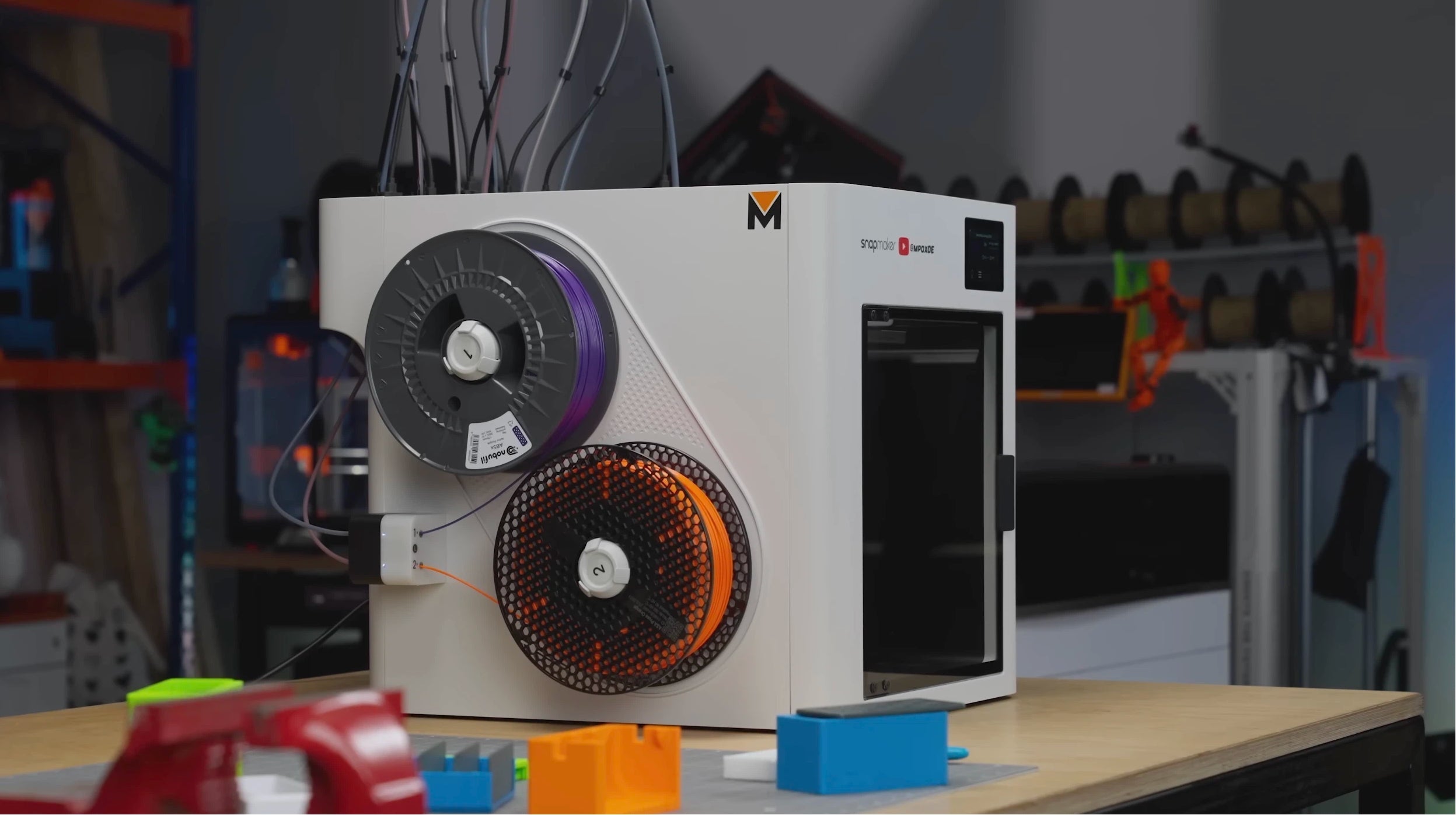Kate G. - SEP 7st, 2025
Snapmaker U1 3D Printer Review: A Smart Machine with Growing Pains

When Snapmaker launched the U1 as its flagship "smart" 3D printer, it promised an all-in-one solution for creators. After rigorous testing, here's an honest assessment of its performance—especially when compared to the crowd-favorite Bambu Lab P1S.
What Is the Snapmaker U1? Key Features & First Impressions
The U1 positions itself as a user-friendly, feature-packed FDM printer targeting the mid-range market. Notable features include:
●Quad Extruder System: 4 independent print heads for true multi-color printing
●Zero Purge Waste: Each color uses dedicated extruders, eliminating filament purging
●Modular Enclosure: U1 Top cover (sold separately for $149)
●Smart Assist Features: Auto bed leveling, filament runout detection, and vibration compensation
●5-Inch Touchscreen: Integrated HD display with custom OS
●Connectivity: Wi-Fi, camera support, and USB printing

Priced at $749 (without enclosure), it competes directly with the Bambu Lab P1S and Creality K1.
Less Waste Means Serious Savings
The U1's quad extruder system revolutionizes multi-material printing by completely eliminating purge waste. Here's how it achieves this breakthrough:

Dedicated Hotends for Each Filament
●4 independent hotends maintain optimal temperature for different materials
● No cross-contamination between colors or materials
● Instant switching between extruders without purging

Cost Savings Analysis
●Traditional systems: Waste 20-30% of filament in purge towers
●U1 system: 0% waste from purging
●Annual savings: ~$300 for frequent multi-color users (based on 10kg filament usage)
Environmental Benefits
●Reduces plastic waste by up to 30%
●No failed prints due to purge-related clogs
●Lower overall material consumption
Multi-Color Printing Showdown: U1 vs. P1S
We printed a standardized 4-color Benchy (30% infill, 0.2mm layer height) to compare efficiency:


Why U1 Wins in Multi-Color Printing:
●4 independent extruders enable simultaneous multi-color printing
●No purge waste means significant material savings
●Faster print times due to eliminated purge sequences
●Better color consistency without material mixing
●Larger build volume (270³mm vs. 256³mm) for bigger projects
Hands-On Testing: The Highs and Lows
●Perfect color transitions with no visible blending
●Consistent layer quality across all extruders
●Surprisingly reliable extruder synchronization
●Spacious build area handles large multi-color models

⚠️ The Mediocre: Hardware Limitations
●Complex calibration required for 4 extruders
●Higher maintenance with 4 hotends to maintain
●Weight distribution challenges with full build volume
❌ The Frustrating: Software and Connectivity
●Limited slicer support for quad extruder optimization
●Touchscreen delays during multi-material files
●Wi-Fi connectivity issues with large files
Who Should Consider the U1?
✔ Multi-color enthusiasts who want waste-free printing
✔ Professional creators needing precise color control
✔ Educators teaching multi-material design principles
✔ Environmental-conscious users reducing plastic waste
✔ Users needing large build volume for big projects

Avoid If:
❌ You primarily print single-color models
❌ You prefer minimal maintenance
❌ You need industrial-grade reliability
Verdict: Revolutionary but Specialized
The Snapmaker U1 delivers breakthrough multi-color printing:
●Zero waste technology sets new industry standard
●Superior color quality unmatched by purge-based systems
●Significant cost savings for frequent multi-material users
●Generous 270³mm build volume for ambitious projects
However, it remains a specialized tool best suited for multi-color applications rather than general printing.

Rating: 9/10
●Multi-Color Innovation: 10/10
●Build Volume: 9/10
●Hardware Design: 8/10
●Software: 7/10
●Value: 9/10
Your thoughts? Have you tried the U1? Share below! 🛠️



